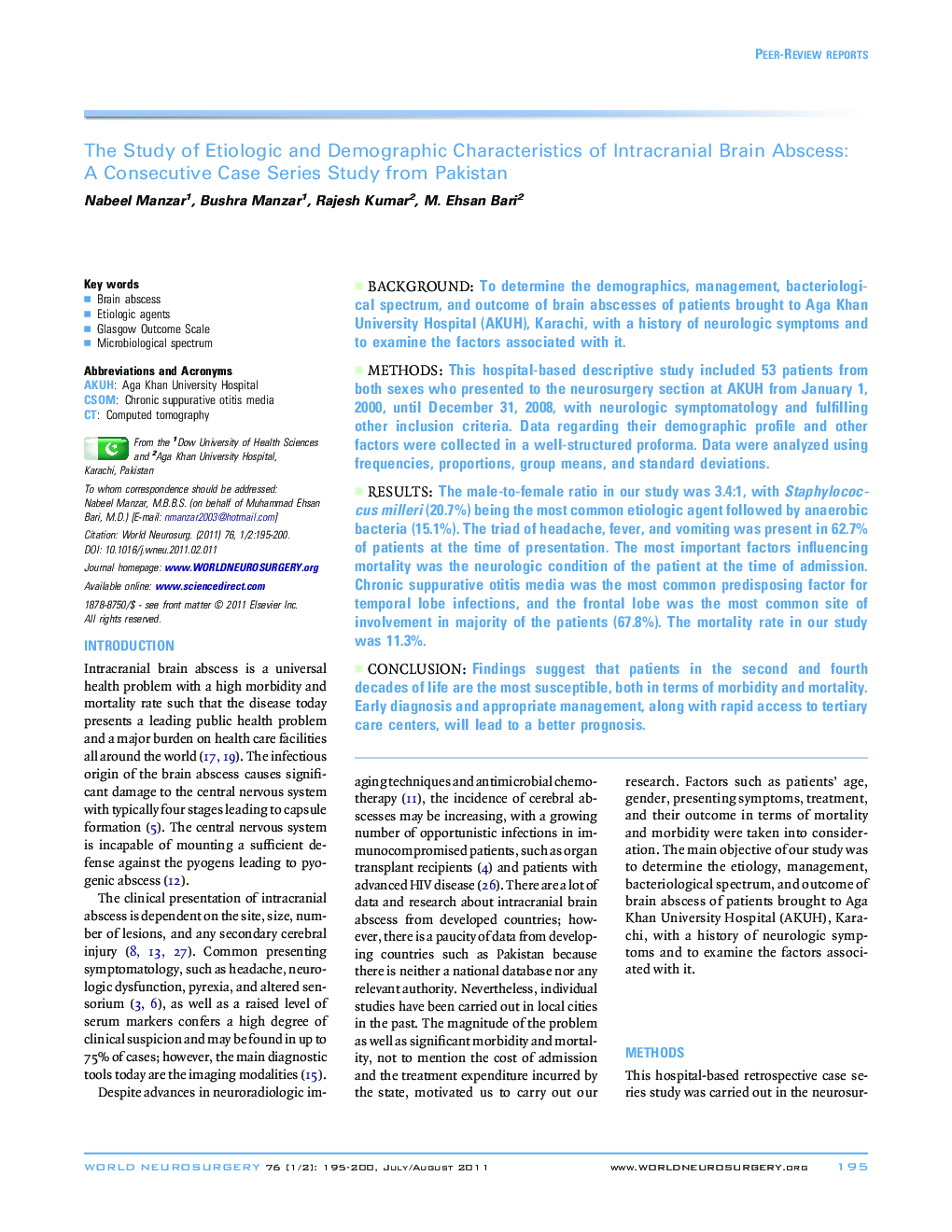| Article ID | Journal | Published Year | Pages | File Type |
|---|---|---|---|---|
| 3097026 | World Neurosurgery | 2011 | 6 Pages |
BackgroundTo determine the demographics, management, bacteriological spectrum, and outcome of brain abscesses of patients brought to Aga Khan University Hospital (AKUH), Karachi, with a history of neurologic symptoms and to examine the factors associated with it.MethodsThis hospital-based descriptive study included 53 patients from both sexes who presented to the neurosurgery section at AKUH from January 1, 2000, until December 31, 2008, with neurologic symptomatology and fulfilling other inclusion criteria. Data regarding their demographic profile and other factors were collected in a well-structured proforma. Data were analyzed using frequencies, proportions, group means, and standard deviations.ResultsThe male-to-female ratio in our study was 3.4:1, with Staphylococcus milleri (20.7%) being the most common etiologic agent followed by anaerobic bacteria (15.1%). The triad of headache, fever, and vomiting was present in 62.7% of patients at the time of presentation. The most important factors influencing mortality was the neurologic condition of the patient at the time of admission. Chronic suppurative otitis media was the most common predisposing factor for temporal lobe infections, and the frontal lobe was the most common site of involvement in majority of the patients (67.8%). The mortality rate in our study was 11.3%.ConclusionFindings suggest that patients in the second and fourth decades of life are the most susceptible, both in terms of morbidity and mortality. Early diagnosis and appropriate management, along with rapid access to tertiary care centers, will lead to a better prognosis.
